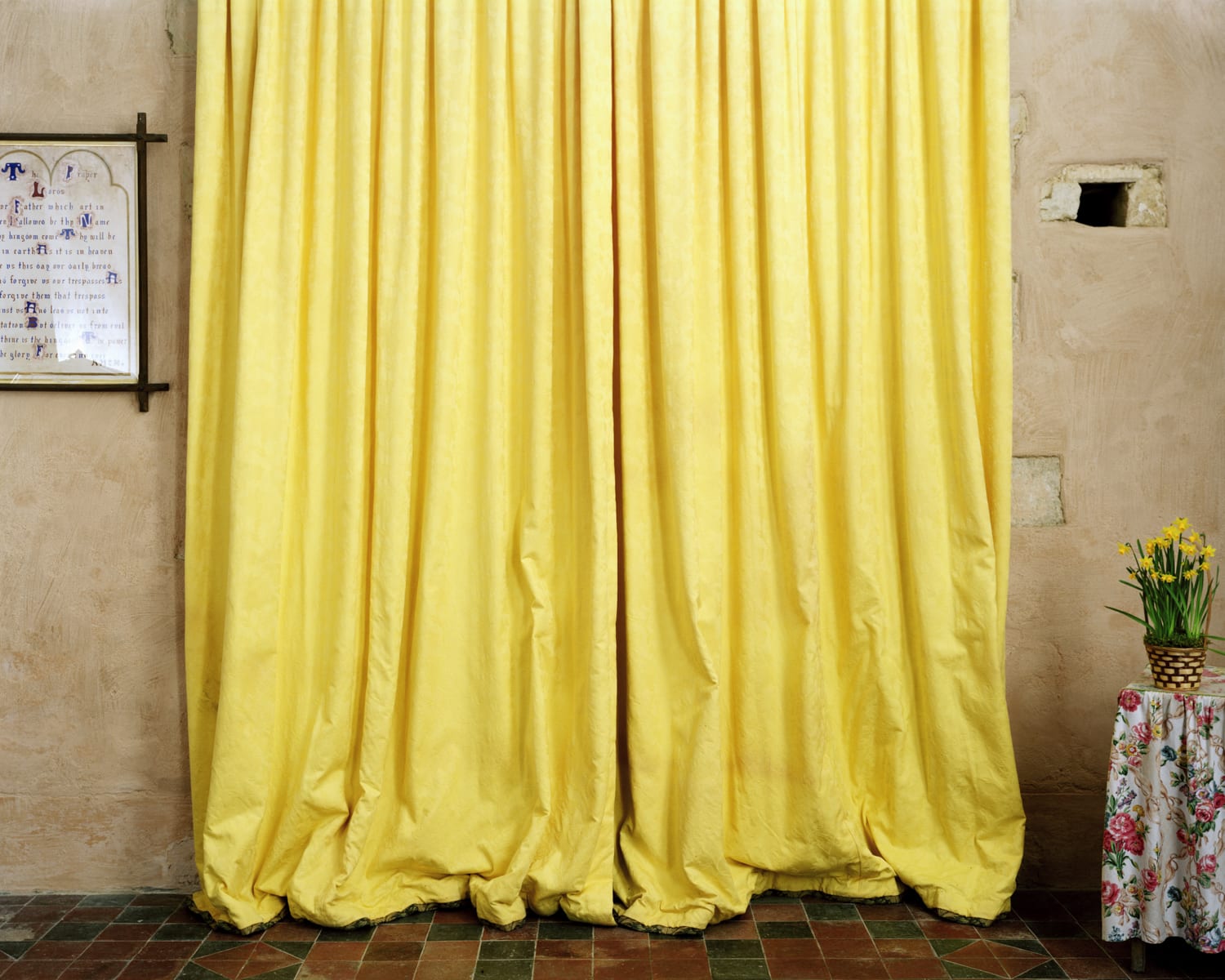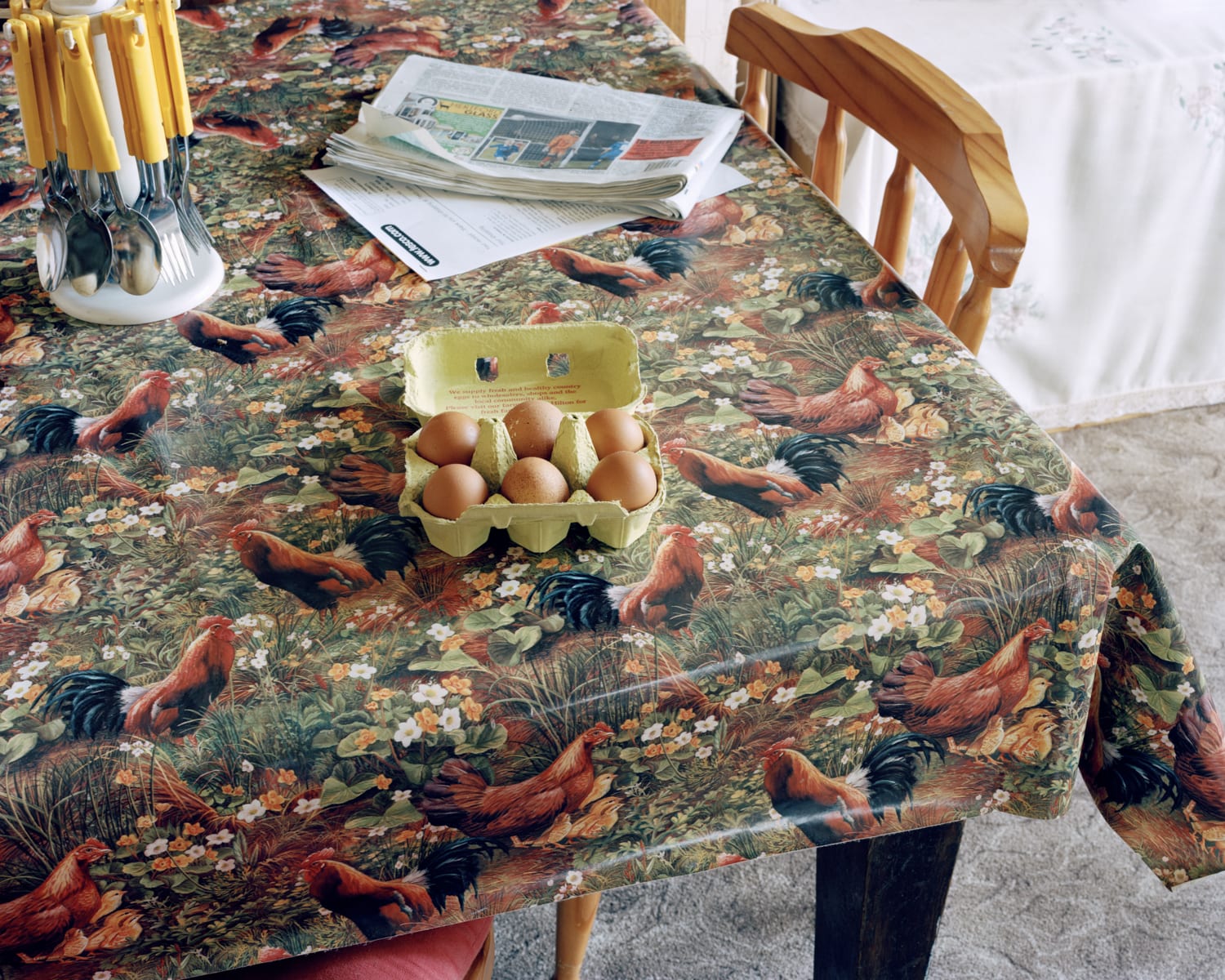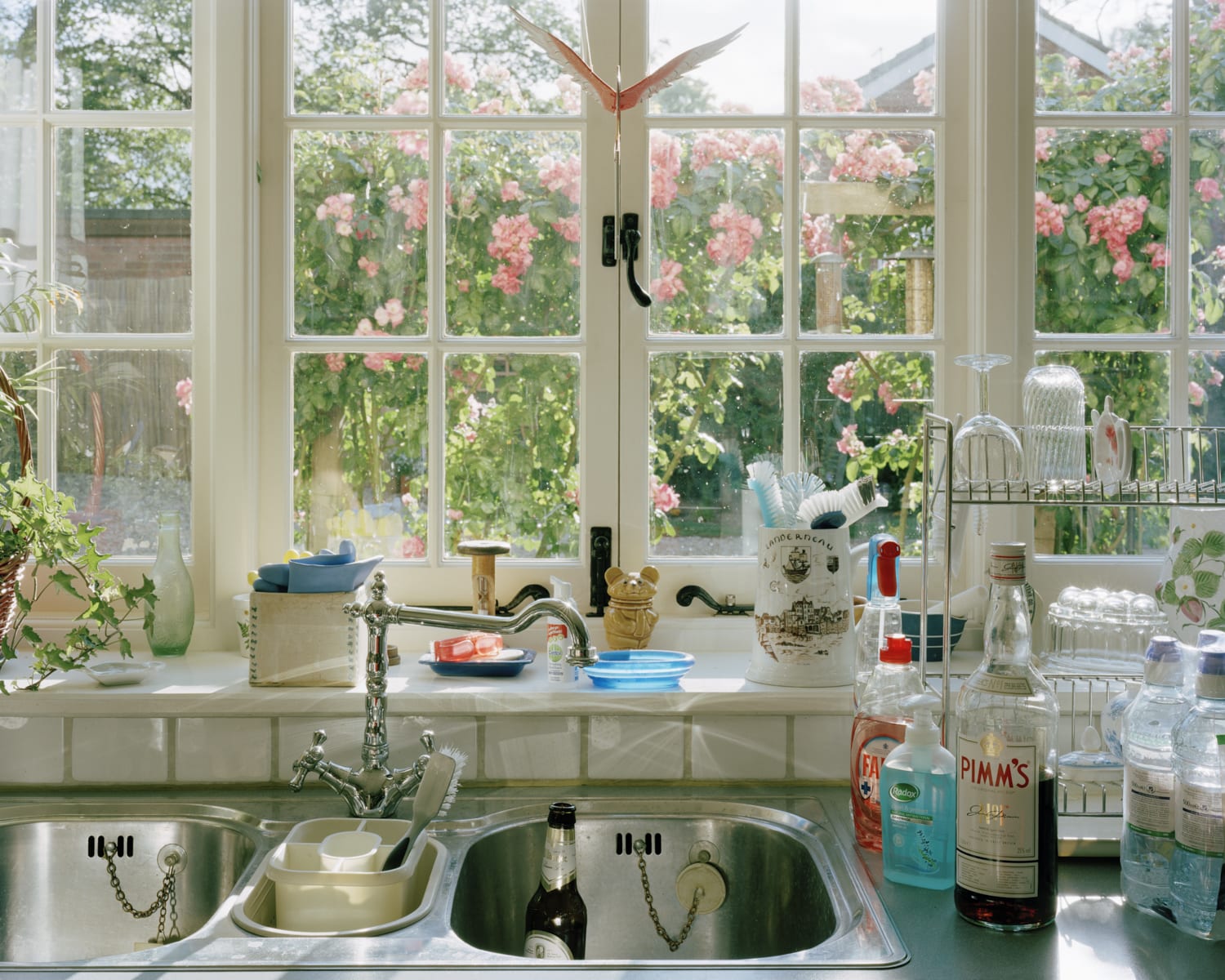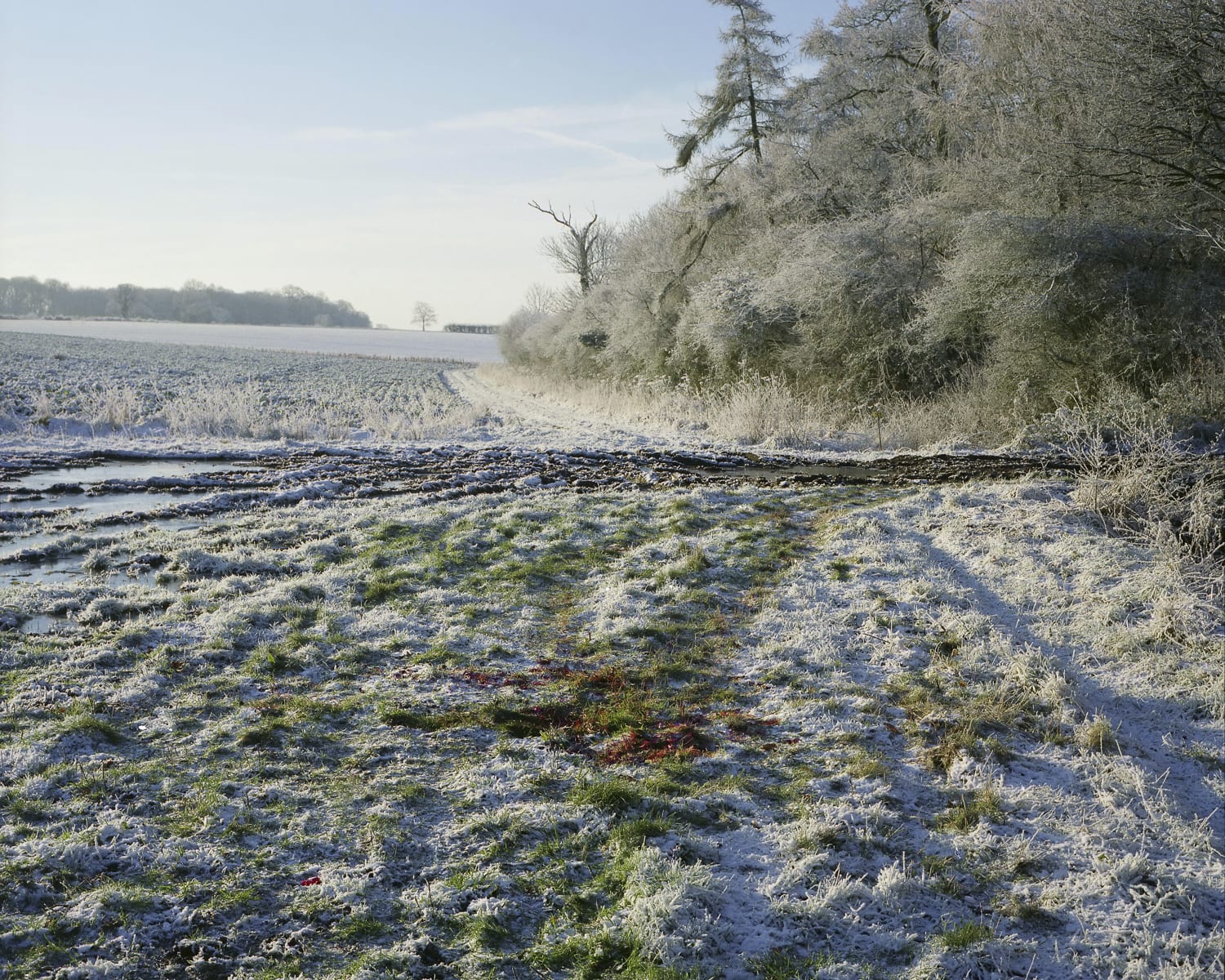Born in east London, Sewell grew up in Hertfordshire, “surrounded by fields and playing in forests and streams, but living essentially an urban life within it – I wouldn’t call it a rural world.” He believes there is a biographical aspect to his search for coherence in his impressions of the English countryside, exploring territory he is familiar with but also distanced from.
The first image that gave him an indication he was on to something was of a box of eggs on a tablecloth festooned with cockerels. He’s not averse to moving things around within the frame – here he squared the box of eggs to the frame and brought the newspaper from another surface. “To me, part of a still life is arranging things. But all the stuff was in the room; I didn’t arrive with a Tesco’s receipt and pop that in the frame.”
About 18 months in he took his first photograph of the view from a kitchen window, and these soon became a means of structuring the sequence. One of the things he loved about these images was the way cleaning products and air fresheners backlit by the window took on a “jewel-like colour that became lurid in some cases. These were colours that were so divorced from nature, and that led me to thinking about plastic, synthetic materials which are so present in this landscape. You wouldn’t think about plastic when you thought about the countryside, but it’s everywhere.”
In addition to the window leitmotif, Sewell’s sequence is also vaguely seasonal, moving from the crisp frosts of early spring, through birthing, blossom, high summer, harvest and snow. “In the pastoral, that sense of seasons is really at the fore,” he says. “Part of the idyll of country life is being more connected to the fundamentals of life, the changing seasons and the weather. I tried different things, but having that seasonal push throughout made sense.”
His images are suggestive rather than descriptive, and this is intentional. “When you’re working in a documentary style there’s a temptation for people to read the work as a kind of survey – this is the English countryside in the early 21st century – and that isn’t my intention,” he says. “I didn’t want people to start thinking, that’s the Cotswolds, or the Borders.”
Instead, the most useful way to approach them is in the way you might read a poem – Sewell read a lot of pastoral verse while making the series, and draws a comparison between the two. “In both poetry and photography you take a single, ambiguous image and put it together with other images until meaning emerges from the relationships between them and a rhythm comes to life,” he says. “It offers something unmistakably compelling, that you can’t quite put your finger on, and so you keep returning, until you do.”
Find more of Andy’s work here.
First published in the February 2014 issue. You can buy the issue here.




